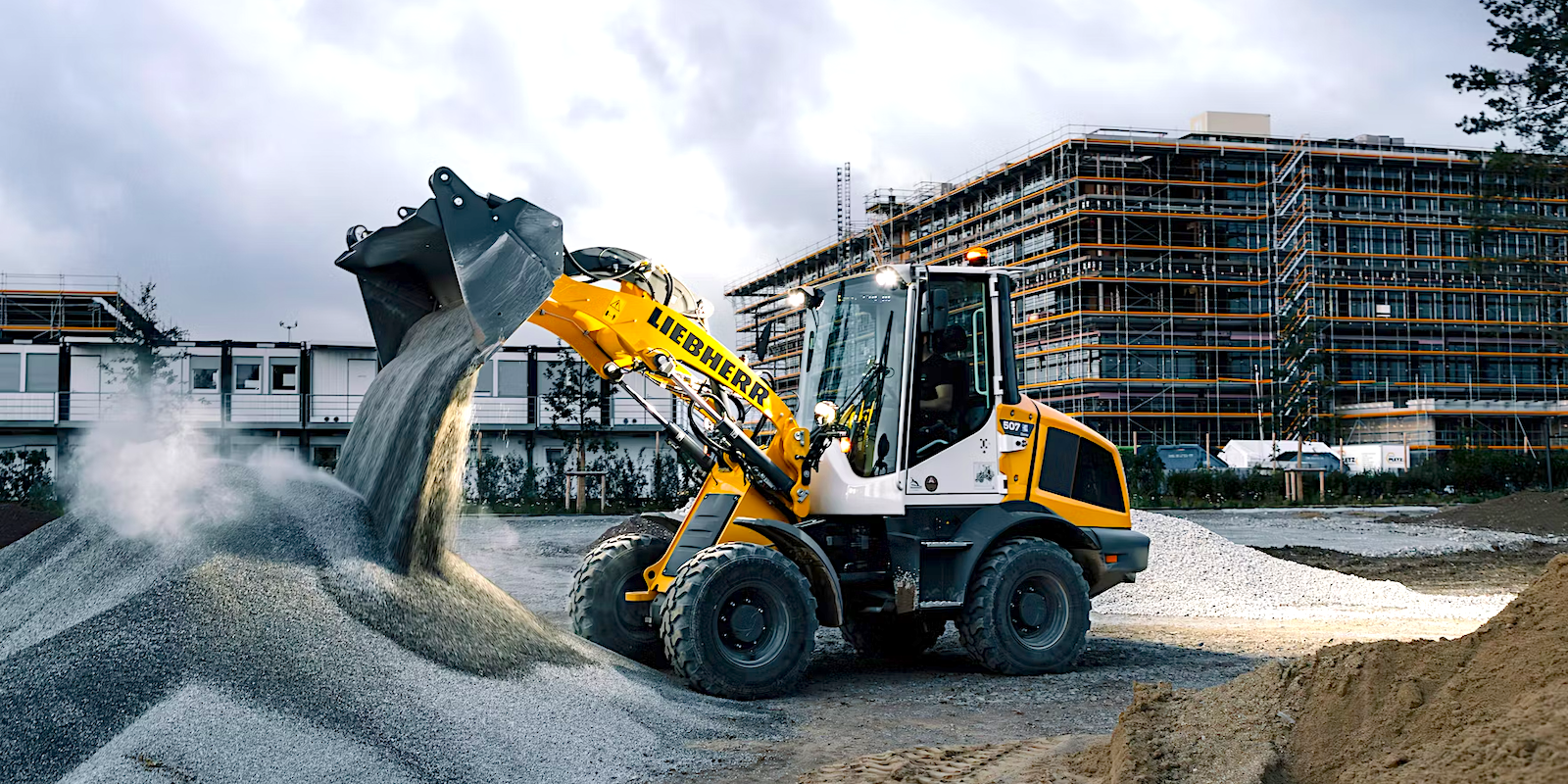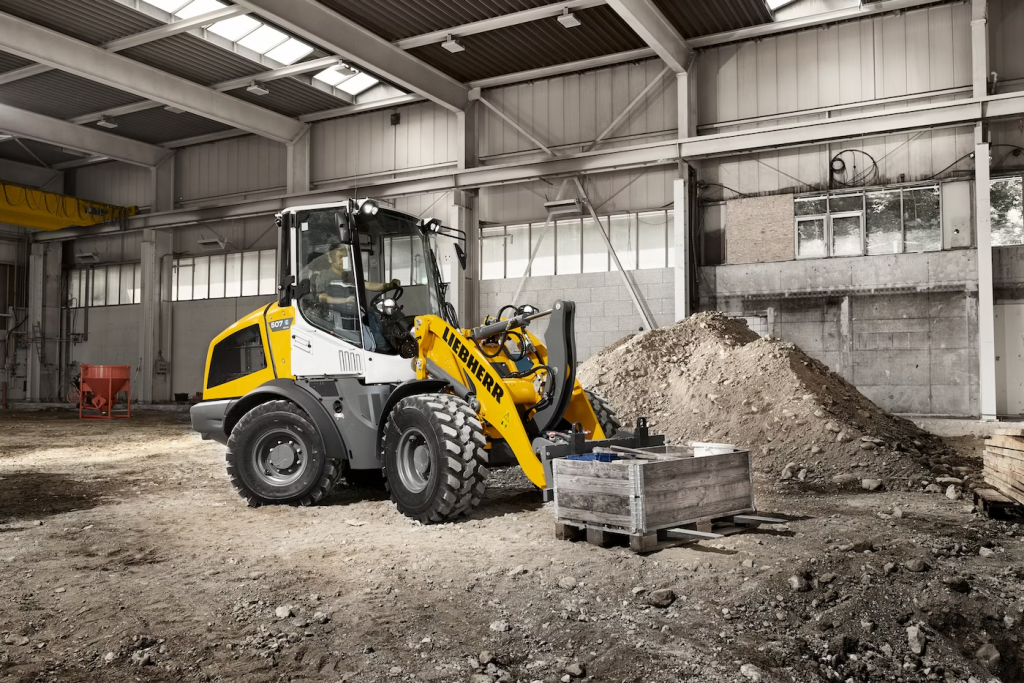
German-Swiss multinational equipment manufacturer Liebherr has has announced that deliveries of its first-ever electric compact wheel loader, the L 507 E, are about to begin.
The Liebherr L 507 E compact wheel loaders were announced last summer, and have been available for order since October. And, while no timeline has been set, chances are good that the battery-powered machine will eventually make its way across the Atlantic.
If and when it does arrive, operators who are familiar with Liebherr’s existing, diesel-powered wheel loaders will be right at home. That’s because the battery-powered L 507 E uses the same stereo steering and lift arms as the standard L 507 Stereo, showcasing the company’s trademarked “Z-bar” kinematics, which work without the need for manual readjustment. The L 507 E also uses Liebherr’s fully automatic LIKUFIX quick coupler system, enabling the use of legacy implements and further lowering the financial barriers to entry.
All the other “selling points” of the L 507, from the huge glass operator cab to the integrated reversing cameras and even the 30 km/h “speeder” option, also carry over. That streamlines the ordering process for fleet managers who know what they need, and just need it to be electric, to order “more of the same.”
Battery power lets you take it inside

That’s important – not just because it makes apples-to-apples comparisons easier, but because it enables fleet managers to quickly envision and understand the machine’s capabilities in environments that may not be immediately familiar to them, like underground mines, or even indoors (as shown, above).
Electrek’s Take
The electrification of wheel loaders and other heavy equipment offers fleets tangible benefits beyond environmental impact. These machines typically exhibit improved efficiency and lower operating costs, combined with fewer injuries and missed days due to respiratory illness and heart disease than their diesel counterparts. What’s more, quieter job sites are often better places to work, leading to improved employee satisfaction and lower turnover.
In short, by adopting more electric assets, construction companies can enhance their job site productivity while significantly reducing their carbon footprint.
FTC: We use income earning auto affiliate links. More.

Comments